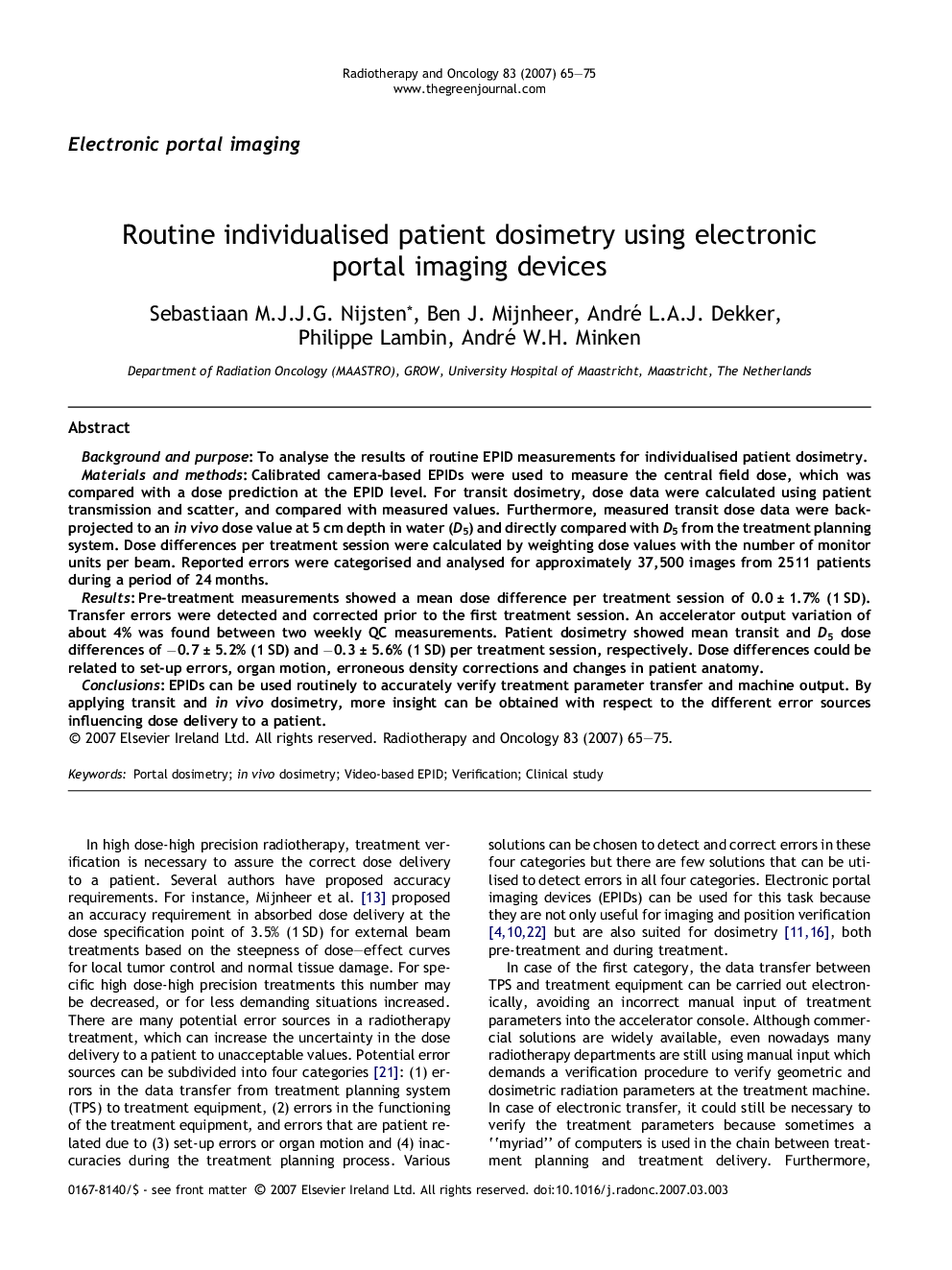| Article ID | Journal | Published Year | Pages | File Type |
|---|---|---|---|---|
| 2160492 | Radiotherapy and Oncology | 2007 | 11 Pages |
Background and purposeTo analyse the results of routine EPID measurements for individualised patient dosimetry.Materials and methodsCalibrated camera-based EPIDs were used to measure the central field dose, which was compared with a dose prediction at the EPID level. For transit dosimetry, dose data were calculated using patient transmission and scatter, and compared with measured values. Furthermore, measured transit dose data were back-projected to an in vivo dose value at 5 cm depth in water (D5) and directly compared with D5 from the treatment planning system. Dose differences per treatment session were calculated by weighting dose values with the number of monitor units per beam. Reported errors were categorised and analysed for approximately 37,500 images from 2511 patients during a period of 24 months.ResultsPre-treatment measurements showed a mean dose difference per treatment session of 0.0 ± 1.7% (1 SD). Transfer errors were detected and corrected prior to the first treatment session. An accelerator output variation of about 4% was found between two weekly QC measurements. Patient dosimetry showed mean transit and D5 dose differences of −0.7 ± 5.2% (1 SD) and −0.3 ± 5.6% (1 SD) per treatment session, respectively. Dose differences could be related to set-up errors, organ motion, erroneous density corrections and changes in patient anatomy.ConclusionsEPIDs can be used routinely to accurately verify treatment parameter transfer and machine output. By applying transit and in vivo dosimetry, more insight can be obtained with respect to the different error sources influencing dose delivery to a patient.
